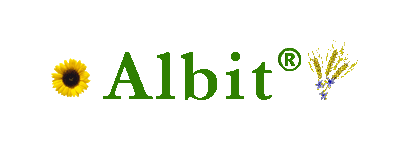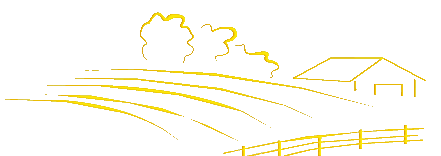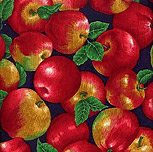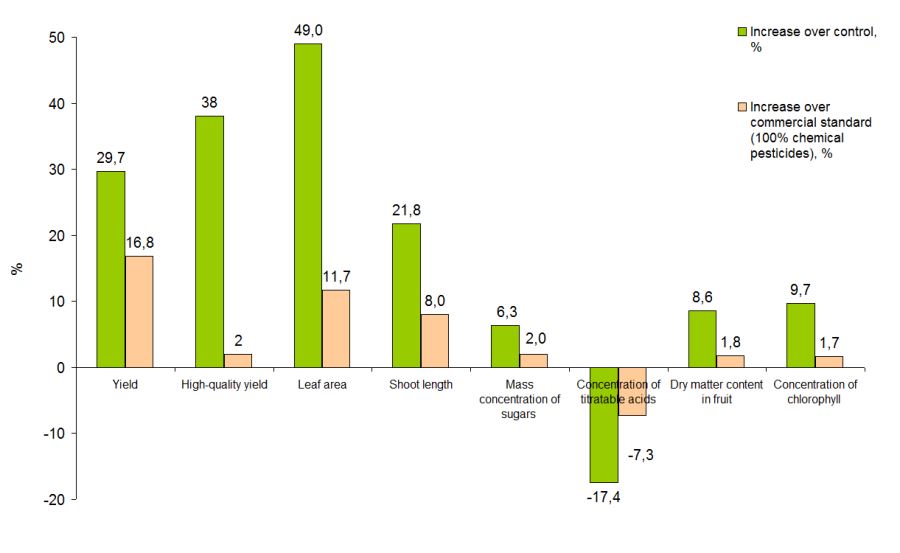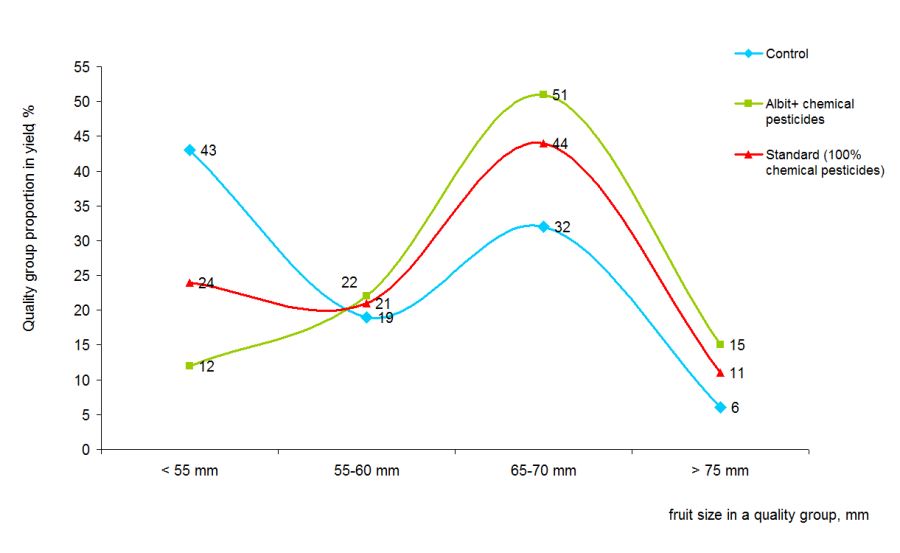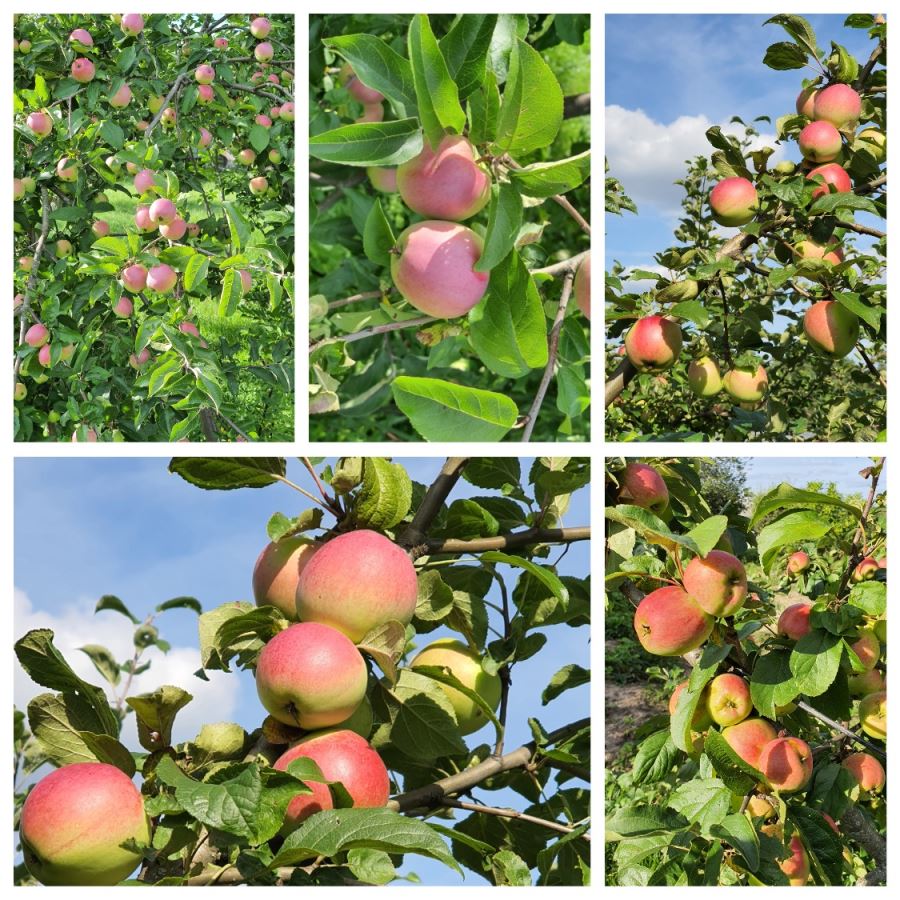|
|
The following articles examined the effect of Albit on apple after its incorporation into the apple trees’ plant protection system:
The effect of using Albit on apple trees was tested by research and trials of the All-Russian Research Institute of Plant Protection (VNIIZR, Voronezh Oblast), All-Russian Research Institute of Horticulture (Tambov Oblast), All-Russian Research Institute of Floriculture and Subtropical Crops (VNIITSISK, Sochi), the Institute of Agriculture of the Academy of Sciences of the Republic of Abkhazia (IAAS), VNNIIViV of Russian Academy of Sciences (Crimea), Institute for Agricultural Research Kromeriz (Czech Republic), State Plant and Soil Protection Organization (Hungary). The experiments studied the varieties Sinap Severny, Pepin Saffron, Zhigulevskoe, Prima, Melrose, Idared, Golden Rangers, Early Red, Red Chief, Reinette Simirenko. The advantages of using Albit in apple cultivation have been long noted at local farms of the Krasnodar Territory, Voronezh and Tula Oblasts. The largest horticultural enterprises of the Central Black Earth Region and Krasnodar Territory (such as Agronom, Sad-Gigant) successfully incorporate Albit into their apple-farming practices as well. On average, the results of the experiments show that Albit treatment increased the apple yield by 1.43 tonne per hectare (+8.5% to control). Albit activates growth processes in apple trees. It increases the surface of assimilation and photosynthetic activity of leaves. According to VNIIZR (2002) and IAAS of Abkhazia (2016-2017), with Albit, leaf area increases by 50% or more, and the annual growth of shoots shows a 12-25% increase (averagely). The average weight of the fruit increases by 4-10%. Including Albit into the pesticide treatment system for the apple orchard has a positive effect on apple quality. Harvest of the Crimean Reinette Simirenko (Sady Alminskaya Doliny LLC, 2019) yielded large amounts of high-quality fruit; mass concentration of sugars and dry matter content in the fruit increased as well. Conversely, the concentration of titratable acids in fruit decreased (Fig. 1, 2).
Annually, we collect a large harvest of high-quality apple fruits on the experimental plot of Albit LLC (Moscow Oblast) (Fig. 3).
Research of the All-Russian Research Institute of Horticulture demonstrated that Albit treatment stimulates both the growth potential of plants (photosynthetic activity) and their ability to resist diseases and stress (catalase activity). The anti-stress effect of Albit on apple trees is important because it allows plants to quickly recover from damage (stress). The stress can be caused by unfavorable weather conditions, frosts, or pesticidal stress from frequent pesticide treatments (especially from copper-containing products). Albit is used as an antidote to reduce the phytotoxic effect of pesticides and has a state registration as an apple tree plant growth regulator (registered to activate growth processes, increase resistance to unfavourable environmental conditions and to disease damage, increase fruit weight, increase yield, improve product quality; when treating grafts – to improve survival rate, activate growth processes, increase resistance to unfavorable environmental conditions). Albit demonstrated 51 to 60% biological efficiency against apple scab (56% on average). Protective effect of Albit showed at 2-72% of disease spread, and at 1-35% of disease development. Data from the Czech Republic shows that Albit facilitated a 10% increase in biological efficiency of fungicides against scab. Preliminary experiments showed an immunizing effect of Albit against other diseases that target apple tree. Results of Albit trials on apple proved that in terms of economic and biological efficiency Albit’s effect was similar to that of products with active substances such as benomyl, difenoconazole, trifloxystrobin, and flutriafol. Application method. Albit is used for spraying trees. The number of treatments can vary from 2 to 5. We recommend applying Albit during the tight cluster stage (inflorescence forming), at pink bud stage, at the end of flowering (petal fall) stage, at late fruit set (‘hazelnut’-size), and at stage-1/-2 fruit development (‘walnut’-size). Extra treatments are beneficial for immunization to prevent potential disease spread. The recommended rate of treatment is 100 ml/ha, the rate of working solution is 800-1000 L/ha. For personal use on small farms or yards, we recommend a solution of 1 ml Albit per 10 L of water, with 2-5 L/tree rate. Application of Albit must be integrated into the plant protection system that is routinely used on site to protect apple trees from pests and diseases. Albit should be combined with scheduled pesticide treatments. For example: Yagodnoye OJSC in Tambov Oblast has been successfully using Albit for 15 years in commercial apple orchards. Yagodnoye use Albit at the pink bud stage, at early flowering, during fruit set (together with a fungicide), and at the ‘hazelnut’ stage (together with fungicide and insecticide). Albit significantly reduces the stress caused by chemical pesticides on apple plants, and gains high yield (20.1 tonne/ha in 2009) The timing of applying Albit can be revised, if necessary, in order to combine it with scheduled chemical/pesticide treatments. In any case, Albit treatments in the first half of the growing season will guarantee a positive effect on plant development. The results of using Albit are usually noticeable after two treatments, and the frequency can be increased after that. The treatments are more effective the earlier they are applied. For example, using Albit at the green tip stage will have a more prominent effect than treating already developing fruits. Earlier treatments immunize plants in advance and create the potential for the accumulation of products of photosynthesis. As noted above, good results can be yielded from combining Albit with fungicides in a tank mix. Especially beneficial will be the combination with contact inorganic products (in particular, copper-containing ones), which have a universal toxic effect on a wide range of pathogens, but at the same time, albeit to a lesser extent, on the apple tree itself. This stressful effect on the plant can be successfully leveled by Albit. Due to the immunizing quality of Albit, the effect of the fungicide against pathogens will be enhanced as well. With recurring frequent treatments of apple orchards, pesticides have a harmful effect not only on plants, but also on the soil under them. Their toxic impact shows in suppressed biological activity of soil microbiome. Albit, added to the fungicide mix, can reduce this toxic effect. Long-term experiments of VNIITSISK (Sochi) determined that using chemical pesticides at the standard recommendations for plant protection reduces the actual biological activity in soil to 43%, and the potential BA to 36%. In these conditions, Albit can compensate for the negative effect of pesticide treatments. Albit increases the actual biological activity by 53%, potential – by 64% (to the level of natural biocenosis). In addition, Albit shortens the time that soil microbiome needs to restore to its functional state after the pesticide application. The rates of fungicide use in apple orchards can be reduced when chemical fungicides are applied together with Albit. Reducing pesticide pressure on orchards by reducing fungicide application rates and using bioproducts is a practice proven effective. In our case, the effectiveness is achieved either by using a 25–50%-reduced rate of fungicide together with Albit, or by replacing some of the fungicidal treatments with Albit treatments. For example, the trials of VNIIS used a 25%-reduced rate of a fungicide based on difenoconazole together with Albit. Results showed that the biological efficiency of the mix against scab on leaves and fruits was almost at the level of the full rate of pure chemical fungicide (standard reference product). In the VNIIZR experiment, two fungicide treatments (11.05 and 5.06) were replaced by treatment with Albit. As a result, the overall fungicide protection of the farm did not become diminished. On the contrary, by the end of the season the least scab-resistant variety Pepin Saffron in the Albit group had more than two times less scab damage on fruit (6.6%) than in the group that was treated with standard plant protection product (13.8%). The yield increased by 10.4-11.6% to the standard group (products based on difenoconazole, flutriafol, benomil, trifloxystrobin). In addition, Albit treatment group showed a significant increase in leaf area: increase of 50% and more; the annual growth of shoots: 12-25% increase; average weight of fruit: a 4-10% increase. A field experiment in Czech Republic (2012) showed that using Albit (100 ml/ha) with a 50%-decreased rate of fungicides gained a 10.9% yield increase to control. When Albit was used together with intensive fungicides treatment, the increase in yield was 18.2%. In this group, the profit per hectare increased almost 17-fold (from 10.8 ˆ to 180 ˆ). Albit also facilitated a 10% increase in biological efficiency of fungicides against scab. On intensive-type farms, such as Sady Alminskaya Doliny LLC (Crimea), Albit was used with a 25%-reduced rate of fungicide three times and used instead of fungicidal treatments twice. In addition to increased amount and quality of yield (Fig. 1, 2), Albit treatment groups showed high biological efficiency against scab on leaves and fruits, and powdery mildew on shoots and leaves of apple trees. Due to Albit, the decrease in the total fungicidal rate did not affect the quality of protection against fungal diseases. On top of that, the farming practice became environmentally friendly with higher health-level of produce. It is important to note that fungicidal action of Albit is based on immunization. Therefore, Albit is only effective if it is applied early before any external signs of an infection appear on the plant. If the goal is to eradicate the disease, we do not recommend completely replacing chemical fungicides with Albit or reducing their rates. Here, Albit can only be used to remove the toxic effect of fungicides applied in full rates. In considering the fungicidal properties of Albit, it is interesting to dwell on one more problem. Recently, wilting and drying of shoots, branches, and sometimes whole apple trees has become a real scourge of the gardens of the Central Black Earth Region of Russia. Wilting can sometimes persist over large areas. Subsequently, farming investors cannot be sure of the future of the apple orchards. Most experts believe the cause of this phenomenon is Monilia fruit rot (‘monilial burn’) caused by the fungus Monilia cinerea f. mali Wormald. Bacteria isolated from diseased plants make us consider the case of bacterial involvement in pathogenesis. High rate of wilting and scale of damage are similar to viral infections known for the destruction of entire commercial orchards in the United States. The situation is aggravated by the low efficiency of fungicides currently on the market against this disease. Here, Albit can be a potential solution. Albit activates the universal mechanisms of plant protection against a wide range of infections. It can effectively immunize the plant against pathogens even if their causative agent is unknown or not fully understood. Notably, Albit will not be able to fully cure trees already damaged with Monilia fruit rot, but it can be used to limit the further spread of the disease. Treatments with effective immunizers, such as Albit, can activate a nonspecific resistance of plants to a wide range of pathogens. This way, a deadly damage to the orchard will be prevented. Albit increases the activity of catalase and, as a result, the ability of apple plants to resist infection. In this sense, immunization with Albit will be particularly beneficial during early inflorescence formation and tight cluster stages (since Monilia fruit rot in the form of conidia mainly affects flowers), and during leaf opening (ascospores of the fungus usually infect young leaves). Combining Albit with insecticides has been proven effective by many trials. This effect is based on the reduction of the insecticide’s toxic effect on plants, and, as a result, high yield is maintained. The rate of use of insecticides should not be reduced when used with Albit. All-Russian Research Institute for Plant Protection deemed it beneficial to include Albit in the apple tree protection system to increase crop productivity and to reduce the harm caused by phytopathogens. Albit allows to 3-fold decrease the rate of use of chemical fungicides (which is especially important in growing produce intended for baby nutrition and medical use) and to significantly increase profitability. The results of experiments that studied effectiveness of Albit on apple are presented in the table below. Studies are sorted by year in descending order, and by region in alphabetical order within each year.
|
|
||||||||||||||||||||||||||||||||||||||||||||||||||||||||
Terms and Conditions
|
|
